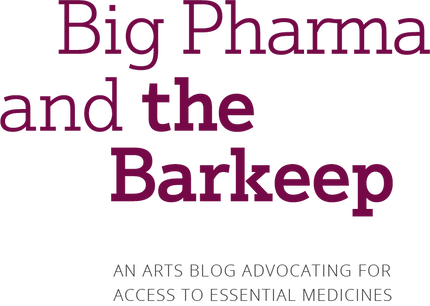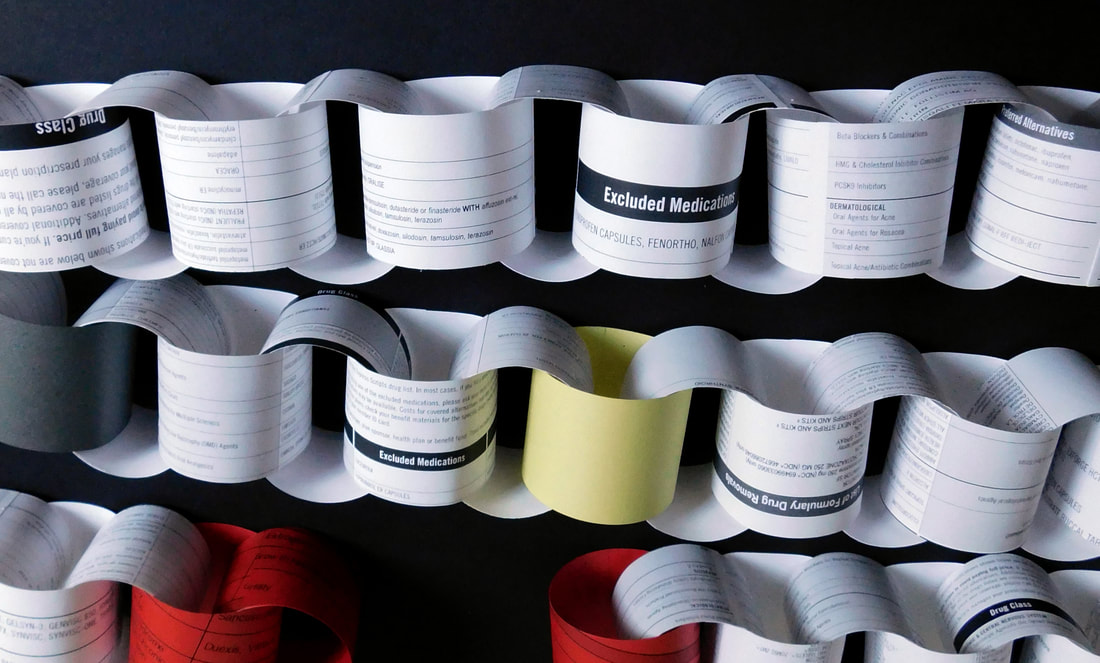|
Even the Kisses Have Changed
The 34 major pharmaceutical corporations that belong to PhRMA together spent more than $120 million lobbying Congress in 2019 In the museum today policy creeps into everything. The Brancusi Kiss is the magical crinkle of limestone hair, locked arms, unity. Rodin’s Francesca and Paolo convene in cool shadows, lighter than marble has a right to be. Sculptures made in other times and countries shift before my eyes. Art in the days of Big Pharma is the permanent hug of lobbyist to lawmaker. Like this. No air between them. No light just the heavy intimacy of money, the universal seal of trust and permission, an ancient contract with American proportions and flair. Real bodies are beholden to what the market will bear. "Even the Kisses Have Changed" first appeared in The Healing Muse, vol. 20, no 1 The Healing Muse is the annual journal of literary and visual art published by SUNY Upstate Medical University's Center for Bioethics & Humanities. See "The Kiss" by Constantin Brancusi. See "The Kiss" by Auguste Rodin.
0 Comments
This post first appeared on the BMJ Medical Humanities Blog On this side of the pond access to medicines is called “complicated” and that’s no accident. As Fran Quigley points out in his introduction to Prescription for the People: An Activist’s Guide to Making Medicine Affordable, calls for reform get bogged down in technical terms and acronyms. Furthermore, he writes, “[T]his thicket of complexity provides cover for corporations that rely on the for-profit medicine model and are determined to protect the status quo.”[1] And the status quo is alarming. The practice of drug formulary exclusions is just one of our bountiful barriers to access in the U.S. There is surprisingly little resistance to it, but tons of exasperation. Impeding access is about more than outright denial. Drug formulary exclusions serve to increase shareholder profits. The motivation behind these decisions is not complicated at all. What can we do? The Welsh poet R.S. Thomas called a metaphor “a shortcut.” I love that. A good metaphor is efficient. A good metaphor gets the job done. We could use such shortcuts to start real conversations in the face of jargon and intimidation surrounding access to medicines, and to this one practice in the midst of the pharmaceutical industry’s intentional complications. So, here’s a visual metaphor. In this illustration strips of printed formulary exclusions from one of the largest pharmacy benefit managers (PBMs) in the country are made into chain links. You can hardly get more accessible than the act of making handcrafted paper chains. Just give a child a glue stick. Paper is powerful, even in this digital age. A valid passport, an expired passport, a divorce subpoena, test results, lottery tickets, university degrees, protest signs, currency, love letters, employment contracts… paper can change your life. When a drug flies off the formulary the preauthorization process arguing for its importance to the patient takes time from clinicians and their staff and can be denied despite everyone’s best efforts. The process also undermines clinician authority. While most changes go into effect at the beginning of a calendar year, they can occur at any time. Patients are “free” to continue taking a medication that is effective for them, or that comes in cartridges that fit their delivery device if they wish to pay cash, as if they had no insurance at all. It’s a curious blind spot in a country that is usually so wild about choice. Have you walked down the breakfast cereal aisle in an American supermarket? We specify the milkfat percentage and flavourings in coffee shops with nuanced precision. How many channels do you watch on how many devices? But what if we were informed that we could only purchase a Ford this January, if that were declared the preferred automobile brand of 2021? We could technically go to other dealerships but suddenly the cost of a Subaru or a Volkswagen would leap exponentially. What if we could only purchase cell phones from a single company? Think of the outcry. And yet, there is a meekness surrounding the medicines we put into our bodies, which are arguably more important than other consumer choices. That is what a drug formulary exclusion does. In addition to data, research articles, and patient stories we need more clarity. We need more urgency, because the chain metaphor rings true. Formulary exclusions hold us down and hold us back. None of us knows when our lives, or the quality of our lives will depend on a medication. It should not be a partisan issue. It should not be a patient issue. All clinicians are patients, after all. It is doubly in the interest of clinicians to push back against the practice. PBMs are middlemen. Like pharmaceutical companies, competition-killing patent laws and PhRMA lobbyists they use complexity to serve their needs. Any way to see their barriers more clearly can help us to improve access, including, perhaps, a few lengths of paper chains. References [1] Quigley, Fran. Prescription for the People: An Activist’s Guide to Making Medicine Affordable, Ithaca and London: Cornell University Press, 2017, p. 3. Before this pandemic I had been thinking about a virtual bar, and about the characteristics of a great barkeep. There is just something about the making and the receiving of a handcrafted drink. The right experience can be had in an international airport, a pub in the basement of a quiet neighborhood, a chandeliered icon of a lounge, or a porch in the mountains at the end of a lonnnng dirt road. Hospitality and aesthetics. A good barkeep is slow to judge, quick to observe. A good barkeep also has a radar for danger, and will not let things get out of hand.
What does a bar have to do with essential medicine access? Well, things have gotten out of hand. When describing American health care costs per capita to other nations in a recent review of the new book by by Ezekiel J. Emanuel in The New York Review of Books David Oshinsky puts it well: “For head-spinning price disparities, however, nothing compares to pharmaceuticals. Americans account for almost half the $1 trillion spent annually for prescription drugs worldwide, while comprising less than 5 percent of the world’s population. It is probably no coincidence that the pharmaceutical industry spent almost twice as much on political lobbying between 1998 and 2020 as its nearest competitor, the insurance industry.” Access to medicines is one part of the vast topic of access to healthcare. It generally isn’t being tackled by artists. It is not restricted to a single disease or place or group of people, but the issue will catch up to most of us, directly or indirectly, at some point. “Big Pharma and the Barkeep” is the title of a poem forthcoming from The Examined Life Journal from the Carver College of Medicine at University of Iowa. I’ll include it when it comes out, and I will continue to explore visual and verbal metaphors to help make clear that this problem is not insurmountable. We can do better. I look forward to discovering and including work by artists who do approach the topic. In the meantime, stop by weary advocates who could use a rest and inspiration. Stop by if you're not convinced of the out-of-proportion costs of access to medicines. Stop by to grasp the urgency. Stop by to take a load off. Respectfully, The Barkeep |
BP&theBAn arts blog advocating for access to essential medicines Archives
June 2024
Categories |


 RSS Feed
RSS Feed